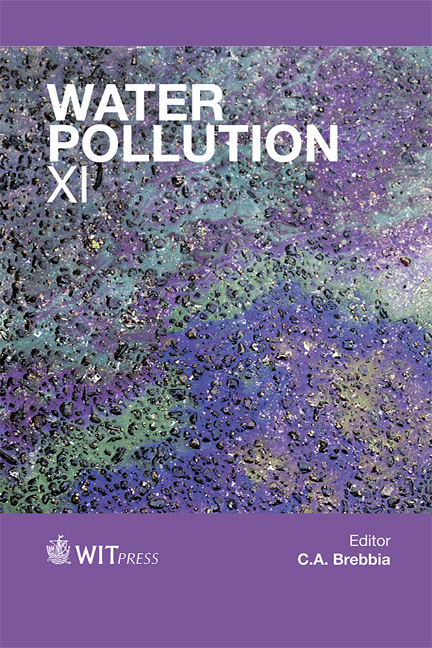Distribution Of Heterotrophic Bacteria And Water Quality Parameters Of Mosul Dam Lake, Northern Iraq
Price
Free (open access)
Transaction
Volume
164
Pages
13
Page Range
195 - 207
Published
2012
Size
5,027 kb
Paper DOI
10.2495/WP120171
Copyright
WIT Press
Author(s)
M. F. O. Khattab & B. J. Merkel
Abstract
Mosul Dam Lake is one of the largest artificial water reservoirs in Iraq, located in the north of the country. This lake is the main source of drinking water in Iraq, providing water to Mosul, Baghdad, and other cities. The surface area of the lake is 385 km2 at the maximum operation level with a total storage volume of 11.13×109 m3. The climate of the study area is arid to semi arid, with rainfall not exceeding 300 mm/year. The highest temperature in summer reaches more than 55ºC. The lake is monomictic with overturn occurring in the autumn. The difference between the lake surface and bottom temperatures during the summer is more than 17°C (31 14°C) and 2°C during winter (12 10°C). Secchi disk measurements show that Mosul Dam Lake is mesotrophic; only the outlet of Dohuk River is eutrophic. In the current study, the standard plate count agar procedure was used for analyzing 45 samples for heterotrophic bacteria. These samples have been collected from different depths and locations in the study area during two sampling campaigns in February 2011 and July 2011. Water quality parameters (pH, EC, NO3, NO2, PO4, TIC, and DOC) for the same locations and depths of the sampled bacteria were measured. Results of heterotrophic bacteria analysis show that Mosul Dam Lake is contaminated with bacteria. The river Dohuk is the major source of this pollution. Occurrence of heterotrophic bacteria during the summer exceeds the winter values by 57%. In a layer located 12–15 m below the surface of the lake with a temperature of 10.9°C, a linear correlation between heterotrophic bacteria and water quality parameters (R2 >0.7) in winter could be observed. However, with respect to phosphorous, a logarithmic relationship with heterotrophic bacteria can be seen. In the summer season, the heterotrophic bacteria had a clear relation with most water quality parameters (R2 >0.7) at depths of between 40 and 60 m within the
Keywords
Mosul Dam Lake, heterotrophic bacteria, water quality





